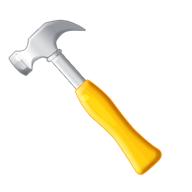1 min read
Uncovering the Real Benefits of MES and Paperless Manufacturing
Curious to know the real benefits of MES, we asked a shop floor production team what the top benefits of the system were one month after their...
4 min read
David Oeters : September 26, 2013 at 5:41 AM

“What is your vision for paperless manufacturing?” I’ve gotten this question countless times.
The easy answer would be to repeat the tagline on our business cards, or prepare an elevator speech with a list of software features and sweet-sounding promises. But, to be honest, that’s not a vision. A vision should be bigger than 15 carefully selected words in a sales pitch. It should be more than mere marketing. A vision should define who you are and create a connection to the listener.
So, this is our vision. We call it a “Day in the Life with Paperless Manufacturing” because we don’t see our system as a list of features, an installation method or a percentage of process improvement (but we can share all that if you want), but a better way to manufacture every day. Here you go… let us know what you think!
 Plant Manager
Plant Manager
Plant manager John Rush arrived at his office; coffee clutched in his hand, and turned on the computer. As it was booting up, he thought back to last year when every morning was a hurried meeting to determine the status of shop floor orders. Sales and customer service worried about priority jobs falling behind schedule, while operations tried to make it all work with resources that never seemed to be enough. The whole process was more guesswork and assumptions than facts.
This morning, with the paperless manufacturing solution in place, John glanced at his dashboard to see the current status of all shop floor orders; completed work; work on hold and work in progress. He quickly determined the priorities with sales and customer service and scheduled the day’s work assignments. He digitally sent morning alerts to Manufacturing Engineers for rework. All the work done in last year’s hour-long meeting was complete in 10 minutes and less than a half cup of coffee. He leaned back and finished his coffee before moving on to the next task.
Manufacturing Engineers
The Manufacturing Engineers, Ed and Susan, received the rework orders through the paperless manufacturing system and quickly updated the work plans. The new plans are quickly sent through Production Control to shop floor workstations to replace the previous information. The engineers know production operations can only work on the latest, most accurate work plans, unlike past years when the morning was a rush of reworked plans being assembled and carried to the floor, while production control reassigned work, and supervisors trained workers for new processes.
“Remember how long it took to print and assemble build books?” Ed asked Susan.
Susan smiled, “Yes, and remember how many mistakes we made doing it,” she replied. With so many moving parts, mistakes happened. Paper errors caused production delays, human errors led to the inaccurate work plans or plans going to the wrong work station. Many times, production ground to a halt while printers churned out paper or employees waited for plans which are now sent digitally with no errors. In the past, every day felt like a crisis waiting to explode because nothing worked as smooth as it should.
Today, Ed and Susan were able to update the work plans from the Best Practices library with the push of the button. They attached short training videos and multimedia materials from the resource library to ease training. Production control reassigned work within the system, and each shop floor employee received only the most relevant and current work plans, training videos, and supplemental production material. New work orders are sent digitally to all assigned workstations. Their morning work complete, Ed and Susan start work on a new training video of a set-up process.
Quality Assurance
Production had begun on the shop floor, and Steve in Quality Assurance is monitoring all quality metrics being measured on the shop floor at his desk. With the paperless manufacturing system, process enforcement ensures shop floor quality checks at each stage before more work can be released. “Before paperless manufacturing,” Steve explained. “I used to give my cell phone number to the shop floor and ask them to call me if there was a non-conformance. I don’t even want to think about how many times I had to put projects on hold because it seemed like non-conformances would all hit at once. Sometimes we had work stations down for 30-45 minutes while they waited for me. And without process enforcement, many non-conformances slipped by in the rush to make up for lost time. Accumulating scrap and major, costly rework was our only option.”
This morning, Steve saw a major non-conformance at Workstation 20. From his desk, Steve ordered work stopped at the Workstation, and sent Ed and Susan an order for a rework plan. Within 10 minutes, Workstation 20 had the rework plan and production resumed.
 Shop Floor
Shop Floor
Later in the day, Greg, a shop floor operator, was collecting data before the completion of the next operation in Work Order 4334. He thought back to a time when he would scramble, looking for a pencil to write data directly on the build book, which clerks would use for data entry. There were times he missed writing a number down, and struggled to remember it at the end of the day. Too many times data entry ended up being a “best guess” that caused problems in audit reviews.
Greg stepped around his workstation; happy he could use a laptop and not carry a build book. He always struggled to find a place to set the build book, many times papers spilled everywhere. On his laptop, he opened the next operation on the Work Order, only to get a sequence alert on the system. Greg opened the correct operation and started work again. Sequence errors once required QA and rework; sometimes an entire new build book had to be assembled. With paperless manufacturing, sequence errors are no longer a problem.
Customer Service and Sales
In the front office, Anne receives a call from a customer about an order shipped last month. In particular, there is a problem with quality acceptance on the welds. Anne asks the customer to wait a moment while she retrieves the as-built records from the system. She sends a copy to the customer. The customer finds the problem, and requests a change order with new specifications. Anne passes the call to Production Control, who put a hold on the order. Ed and Susan make changes to the work order, and the revised order is sent directly to Greg at his Work Station. Greg opens the revised orders and continues work. With paperless manufacturing, the change order should cause minimal delay in the order.
As the day closes out, John the Plant Manager checks the status on jobs complete, jobs pending, WIP, and jobs on hold. He notices a priority job falling behind and reassigns the shop floor to ensure the deadline is met. John creates a report and sends it to sales, then calls a meeting for Ed, Susan and Anne to assess progress and reset priorities for tomorrow. Each prepares a report in the system to share at the meeting.
“Having real-time access to data, and knowing information is getting to the right person at the right time, is more than a convenience,” John, the Plant Manager, explains. “It makes us more productive, letting us focus on priority tasks and solve problems. It gives us real control over the shop floor, eliminating production errors and saving us money every day. I can’t imagine life without paperless manufacturing.”

1 min read
Curious to know the real benefits of MES, we asked a shop floor production team what the top benefits of the system were one month after their...

1 min read
Most manufacturers know quality and efficiency would suffer if they asked their shop floor to use the wrong tool, but all too often that’s what...

1 min read
Paperless manufacturing and the digital shop floor are changing manufacturing for the better, but there are still companies reluctant to embrace the...